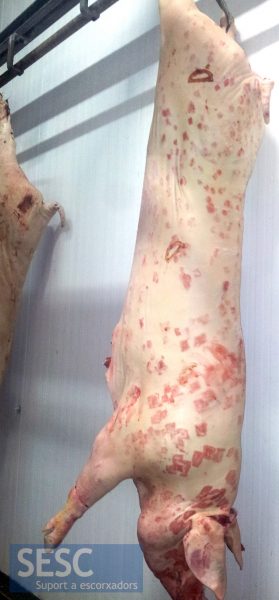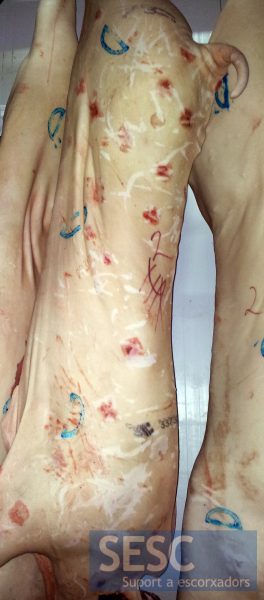Erysipelas in a pig carcass
Although this website has been running for 10 years now, a classic erysipelas case in a pig carcass had never been submitted to us so far. This disease causes red-colored skin lesions with a characteristic diamond morphology.
It is an infectious disease caused by the bacterium Erysipelothrix rhusiopathiae, it is a bacterium with a very wide range of hosts (it can also affect lambs, birds and people). It is quite common in pigs, especially between 2 and 12 months of age.
The course can be varied, from an acute septicemic form, usually fatal and associated to epidemic outbreaks, to more chronic and mild forms, typical of endemic situations, where the characteristic necrotic lesions of the skin predominate along with endocarditis (inflammation of the valves of the heart) and fibrinous polyarthritis.
Being a septicemia (high fever, abortion ...) and presenting erythematous skin lesions, it should be taken into account in the differential of other septicemias and viruses such as those of ASF and CSF.
Next, a couple of images of skin lesions, in carcases already scalded, that have been submitted recently:

Diamond-shpaed lesions in the skin of a pig carcass.

A milder case of erysipelas.


2 comment(s)
Sigue siendo motivo de decomiso total si las lesiones de la piel ya no son rojas y solo se ven los relieves?
Si se observa el relieve antemortem, tras el escaldado las lesiones se veran seguro enrojecidas. En cualquier caso, una sospecha de mal rojo, por definición se trata de una septicemia bacteriana, por lo tanto, en efecto, seria decomiso total.